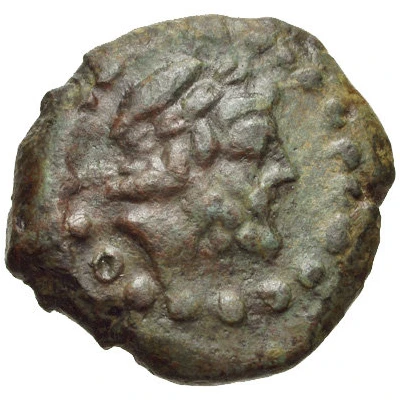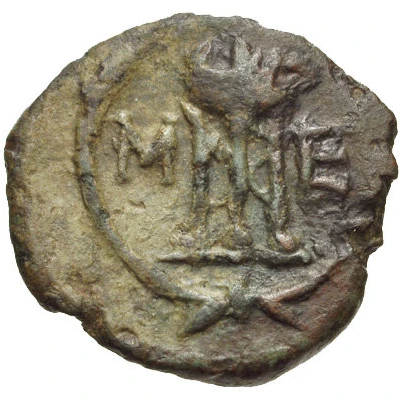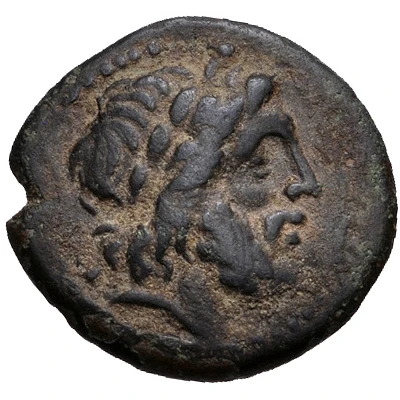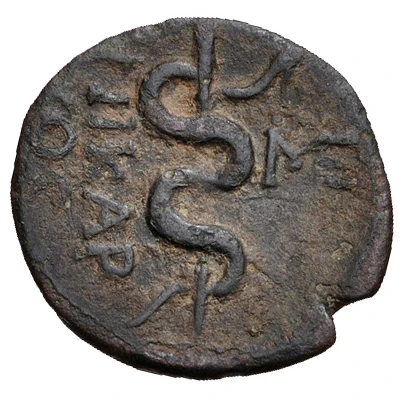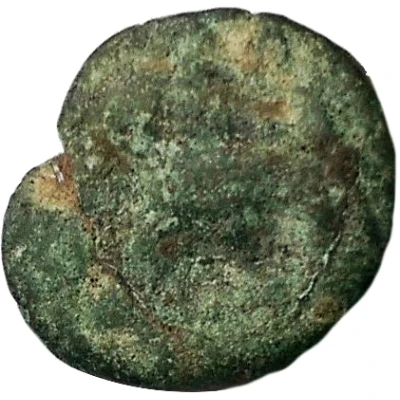
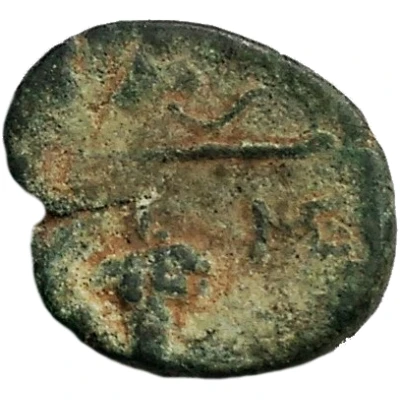

© Arusak
Trichalkon 180 BC - 150 BC
| Bronze | 2.83 g | 16 mm |
| Issuer | Messene (Messenia) |
|---|---|
| Type | Standard circulation coin |
| Years | 180 BC - 150 BC |
| Value | 1 Trichalkon = 3 Chalkoi = 3⁄48 Drachm (1⁄16) |
| Currency | Drachm |
| Composition | Bronze |
| Weight | 2.83 g |
| Diameter | 16 mm |
| Shape | Round (irregular) |
| Technique | Hammered |
| Orientation | Coin alignment ↑↓ |
| Demonetized | Yes |
| Updated | 2024-10-10 |
| Numista | N#147701 |
|---|---|
| Rarity index | 97% |
Reverse
Bunch of grapes hanging from branch; to right, above in wreath with ME monogram to the right
Interesting fact
The Trichalkon coin was used in ancient Greece during the Hellenistic period, specifically in the city-state of Messene (Messenia) around 180-150 BC. The name "Trichalkon" means "three chalkoi" in Greek, which refers to the three small bronze coins that were used as a unit of exchange in ancient Greece. These coins were equivalent to a single drachma, which was the standard unit of currency in ancient Greece. The Trichalkon coin was made of bronze and weighed around 2.83 grams. It's interesting to note that the use of bronze coins like the Trichalkon was a significant innovation in ancient Greece, as it allowed for more efficient and standardized trade, and it paved the way for the development of modern currency systems.
